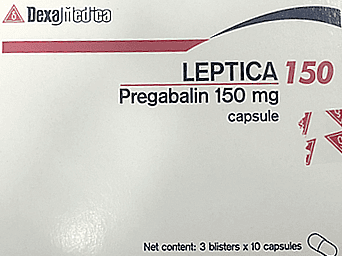This is an automatically translated article.
Ztlido is a patch containing 36mg Lidocaine, used to relieve pain caused by damaged nerves after shingles. The article will provide information about the uses, side effects and notes when using Ztlido.
1. What is Ztlido?
Ztlido drug contains the main active ingredient is Lidocaine, a local anesthetic of the amide group. Lidocaine works by blocking the sodium ion channels needed to initiate and conduct nerve impulses. Ztlido is a prescription medication used to relieve pain caused by damaged nerves after shingles. It is recommended to use Ztlido only up to 12 hours a day.
Ztlido is contraindicated in patients with a history of hypersensitivity to the local anesthetic amide type or to any other ingredient in the product. In addition, the safety and effectiveness of Ztlido in children have not been established, so Ztlido should not be used in this population.
2. What are the side effects of Ztlido?
Patients using Ztlido may experience some side effects as follows:
Skin and subcutaneous tissue: Blisters, bruising, burning sensation, loss of pigmentation, dermatitis, discoloration, edema, erythema, peeling, irritation, petechiae, itching and abnormal sensations. Immune system: Angioedema, bronchospasm, dyspnea, hypersensitivity, laryngospasm, shock and urticaria. Central nervous system: Dizziness, nervousness, anxiety, excitement, confusion, dizziness, drowsiness, ringing in the ears, blurred or double vision, feeling of heat, cold or numbness, convulsions, tremors, unconsciousness, somnolence, respiratory depression. Cardiovascular: Bradycardia, hypotension, cardiovascular collapse leading to cardiac arrest. Other: Asthenia, disorientation, headache, delirium, metallic taste, nausea, worsening pain, paresthesias, altered taste and vomiting
3. Notes when using Ztlido
When Ztlido is used concurrently with other products containing a local anesthetic, the total amount of drug absorbed from all products should be considered and calculated to avoid an overdose. Using more or longer than recommended amounts of Ztlido (more than 12 hours every 24 hours) may increase lidocaine absorption and blood levels, leading to adverse reactions. Patients with severe liver disease are at risk of having higher blood levels of Lidocaine because they cannot metabolize Lidocaine normally. Using the drug on broken skin may lead to higher blood levels of Lidocaine due to increased absorption. Wash hands immediately after using Ztlido and avoid contact with eyes. If Ztlido comes into contact with eyes, flush with water or physiological saline immediately. Store Ztlido inside its sealed packaging, out of the reach of children. Fold the used Ztlido patch with the medication side facing in and dispose of it in a suitable place to prevent ingestion by small children or pets. Do not apply external heat sources, such as heating pads or electric blankets directly to Ztlido because plasma lidocaine concentrations may be increased. Ztlido can be used with moderate exercise, such as cycling for 30 minutes. Ztlido can be exposed to water, such as a 10-minute bath or a 15-minute soak. Patients can dry the application site after contact with water by patting the skin, not rubbing. If the patient experiences irritation or burning sensation during application, discard the Ztlido patch and do not reapply until the irritation has subsided. Treatment of postherpetic neuralgia: It is recommended that patients use Ztlido at the prescribed dose, up to 12 hours in a 24-hour period. In debilitated or impaired patients, it is recommended to treat multiple small areas by cutting Ztlido into smaller pieces. Methemoglobinemia: Local anesthetics can cause methemoglobinemia, a serious condition that requires prompt treatment. Discontinue use of Ztlido if the patient develops symptoms such as pale/gray or cyanotic skin, headache, tachycardia, shortness of breath, lightheadedness, fatigue.
4. Drug interactions
Using Ztlido at the same time with some other products may cause interactions, change the effectiveness or increase unwanted effects. Therefore, patients should inform their doctor of all medicines, vitamins and health foods that they are taking for advice. Here are some interactions to watch out for when using Ztlido:
Patients receiving Ztlido may have an increased risk of developing methemoglobinemia when used concomitantly with drugs such as Nitroglycerin, Nitroprusside, Nitrous oxide, Dapsone, Nitrofurantoin, Phenobarbital, Phenytoin, Acetaminophen, Metoclopramide, Quinine, Sulfasalazine,... Ztlido is used by patients who are taking class I antiarrhythmic drugs such as Tocainide and Mexiletine which may increase the side effects. Therefore, it is necessary to weigh the risks and benefits when using them together. When Ztlido is used concomitantly with other products containing a local anesthetic, consideration should be given to the amount absorbed from all products to avoid overdose. Above is general information about Ztlido pain reliever. Patients should consult their doctor or pharmacist before taking the drug to ensure maximum effectiveness.
Please dial HOTLINE for more information or register for an appointment HERE. Download MyVinmec app to make appointments faster and to manage your bookings easily.
Reference sources: drugs.com, webmd.com












